Perennial Favorite
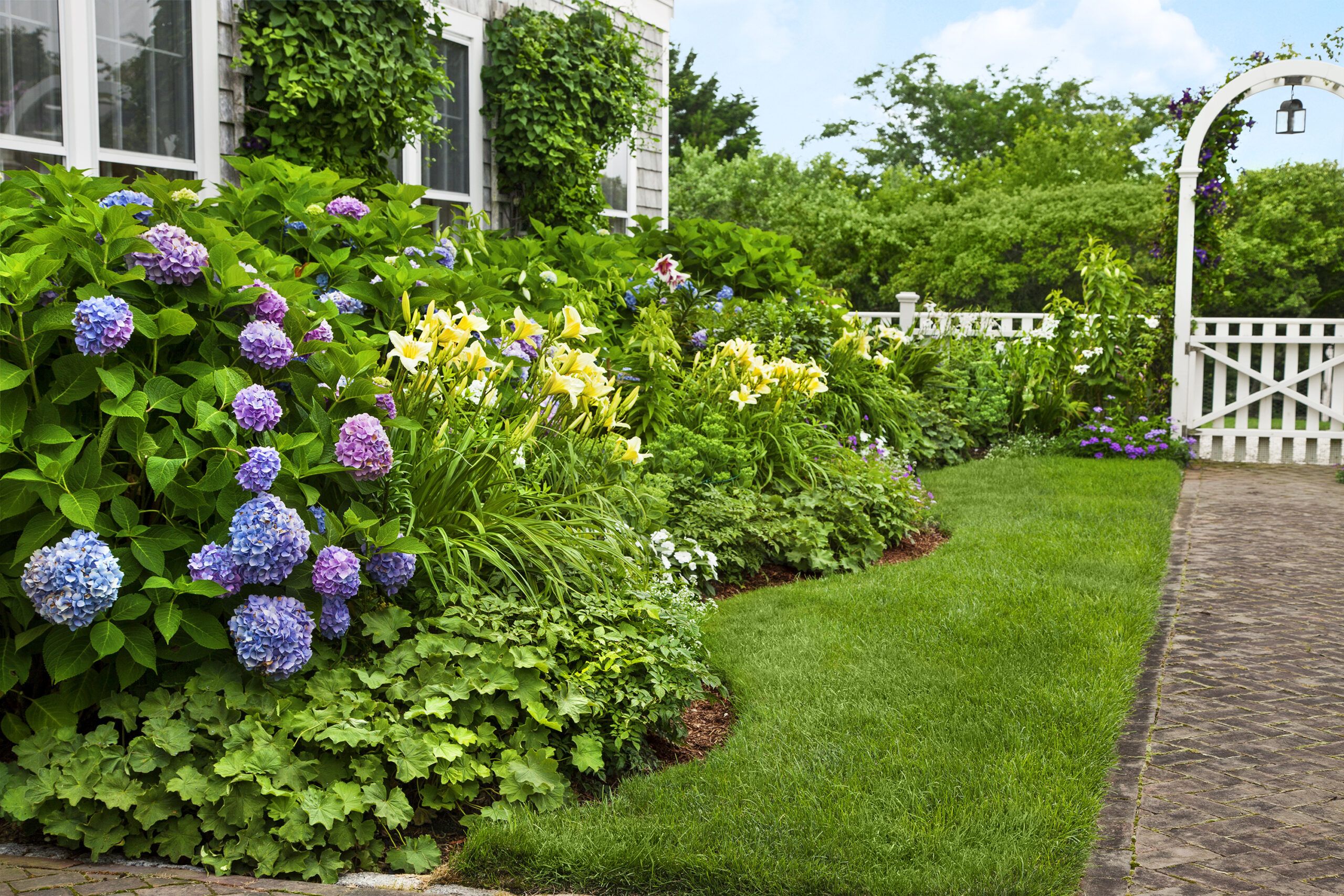
Gracious and welcoming, filled with old-fashioned flowers and billowing foliage, a cottage garden is what many homeowners’ dreams are made of. Abundant, colorful blooms combine with lush hedges, crisp white picket fences, and graceful garden arches to create a compelling juxtaposition of structure and informality that inspires leisurely strolls and daydreaming.
When Michele and Marc Flaster moved into their home in Nantucket, Massachusetts, some years ago, the front of the house was wrapped by a charming, if basic, upsized version of a cottage garden. It was dominated by blue mophead hydrangeas, perennials such as Shasta daisies and roses, and lots of annuals, including snapdragons and sweet alyssum. Michele settled in happily and over time added plants she loved—peonies, daylilies, phlox, astilbe, sedum, lavender—customizing the mix to her own taste.
Shown: A picket fence, with a gated arch, frames this cottage-style entry garden in Nantucket. The flower beds’ undulating curves echo the billowing forms of the blooming hydrangeas and daylilies.
Softening the Lines
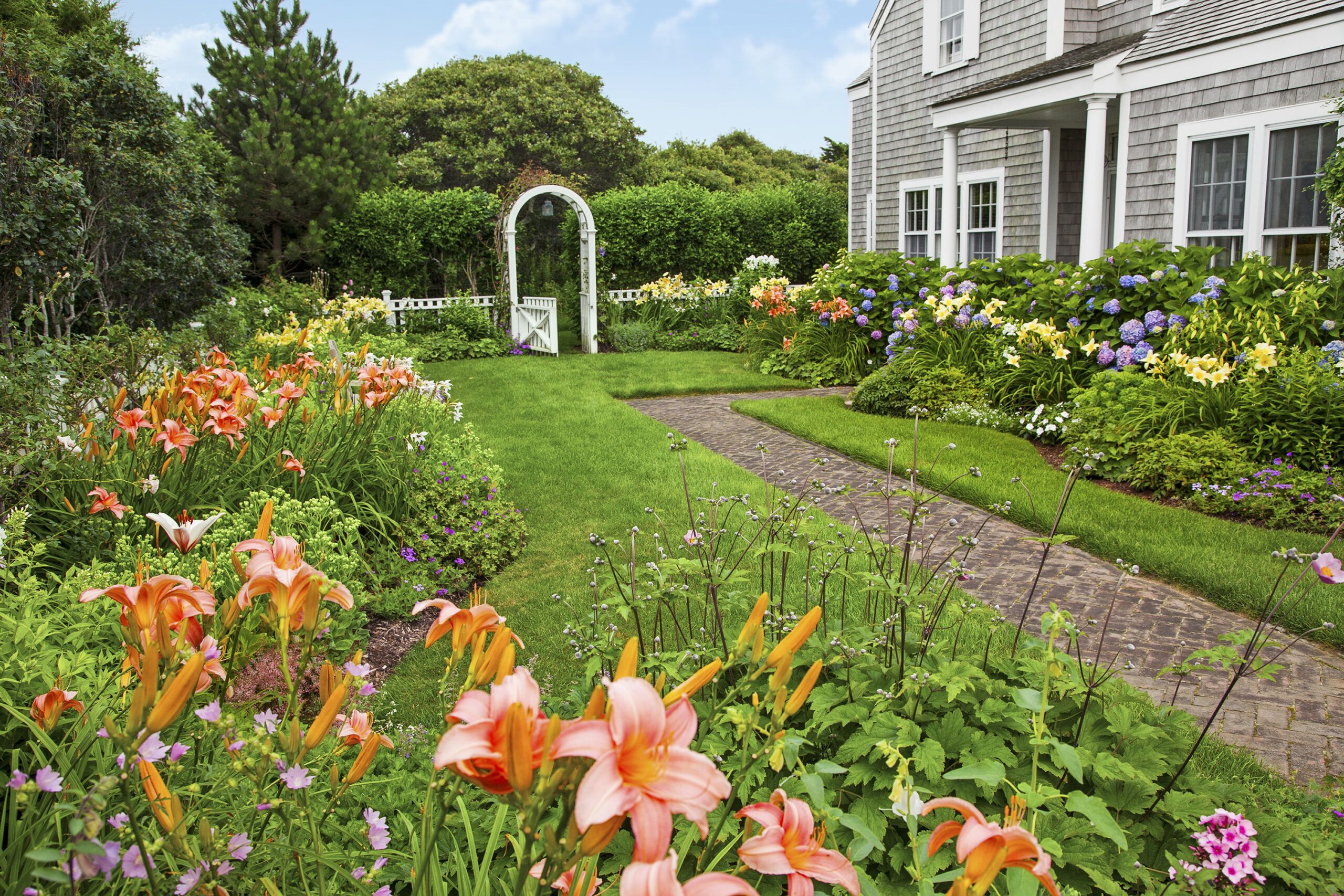
But maintaining the loose, laid-back look of a classic cottage garden actually requires quite a bit of care and attention. And on a high-up island elevation whipped by wind, roamed by hungry deer, and subject to winters that are increasingly severe, that work was bound to multiply.
As time passed, the rigid lines of the rectangular beds also felt at odds with the undulating surrounding natural landscape on Nantucket. Michele found herself wanting to soften the garden and direct its evolution. She started laying out hoses to introduce curves to the beds, aiming to keep the look of a cottage garden while respecting the free-form vegetation beyond it. She began to notice the plants that were struggling, those that required too much maintenance, and those whose bloom period seemed a little too fleeting. Rather than fight to keep her vision of the garden, she decided to adapt to what the site was telling her.
Shown: The brick path leads to the front door and also directs views to the arbor, where ‘New Dawn’ and ‘Blaze’ roses climb. On the other side of the fence, a rose of Sharon hedge serves as a leafy wall.
Secluded Corner
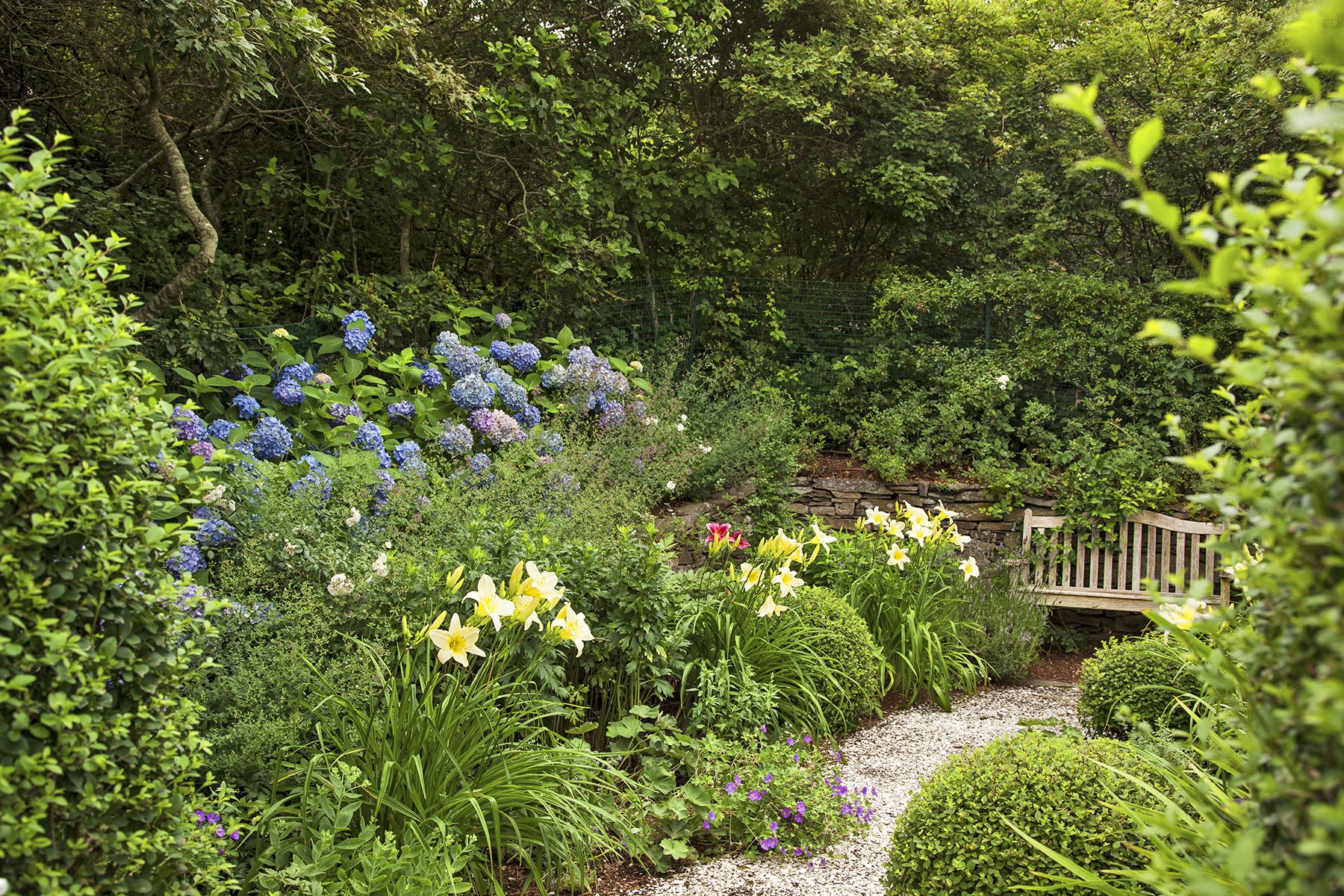
Along the way, Michele sought the advice of local garden designer Amy Pallenberg, and together they began to renovate the garden by simplifying the beds and adjusting the plant selection. Perennials that thrived, like the ‘Vision in White’ astilbe and ‘David’ phlox, were divided and spread around. Some that formed a dense mass that crept relentlessly outward, like the iris, had to go. In their place came exuberant flowering salvias, dahlias, and South African foxglove (Ceratotheca triloba), which provide a longer period of bloom and are treated as annuals here. Long-blooming ‘Jackmanii’ clematis joined climbing roses like ‘New Dawn’ and ‘Blaze’ that are hardy, disease- resistant, and offer flowers all season.
Shown: By the garage, ‘Johnson’s Blue’ geranium joins daylilies and hydrangeas to border the shell path to a bench where Marc Flaster likes to sit and read.
Outdoor Room
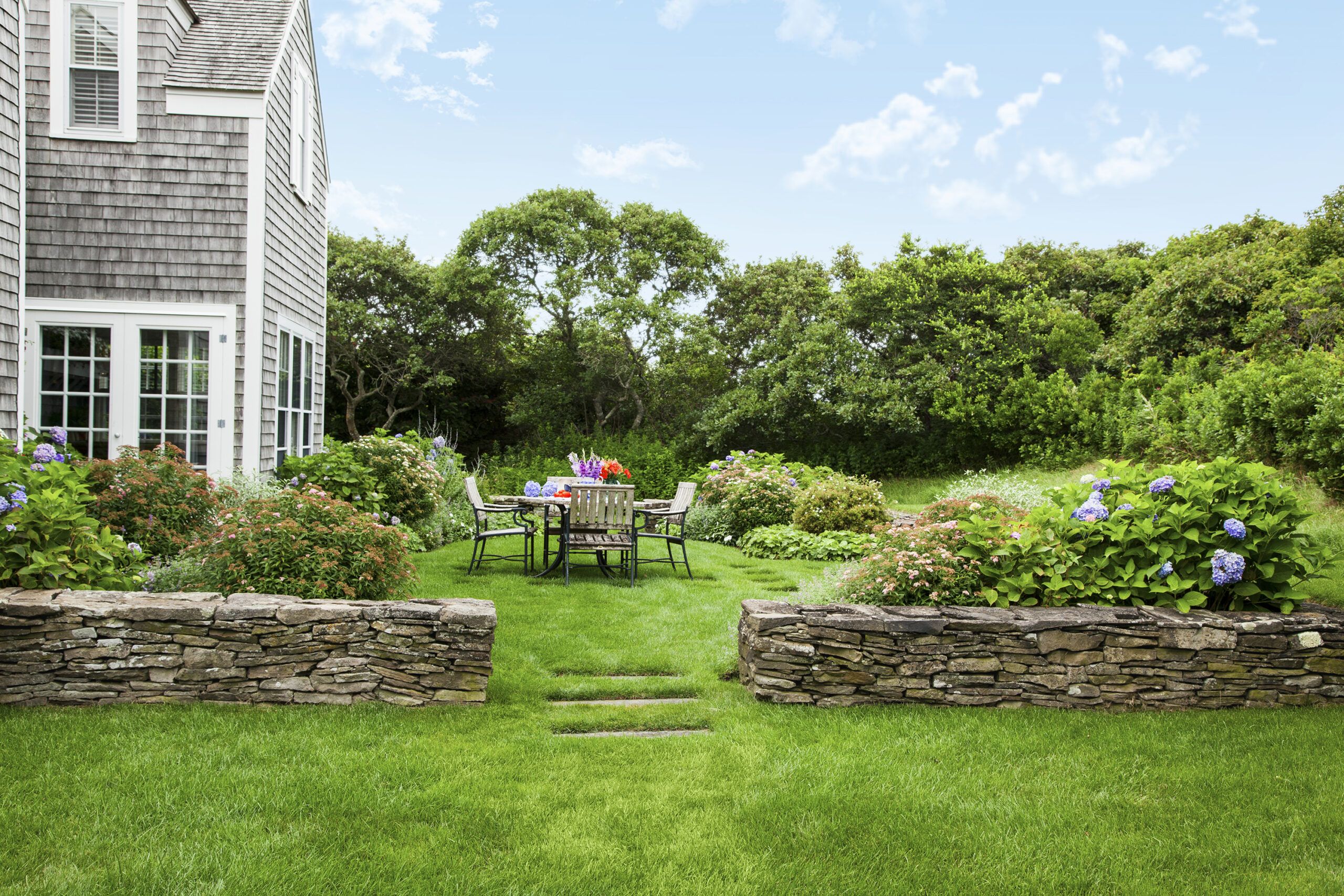
The house had also come with a back garden, defined by stone walls and designed for dining, where the lavender lasted only a few years before succumbing to a particularly harsh winter. ‘Walker’s Low’ catmint, which offers a similar look with a much tougher constitution, took its place.
Deer-resistant plant choices were especially important in this garden, which is open on two sides and is also a favorite snacking ground for rabbits; the family’s Tibetan terrier helps keep them at bay.
Shown: Softening the corners of the stone walls defining the back garden are pink and white ‘Shirobana’ spireas, catmint, lady’s mantle, and mophead hydrangeas. Flagstones define the dining area.
Indulging in Color
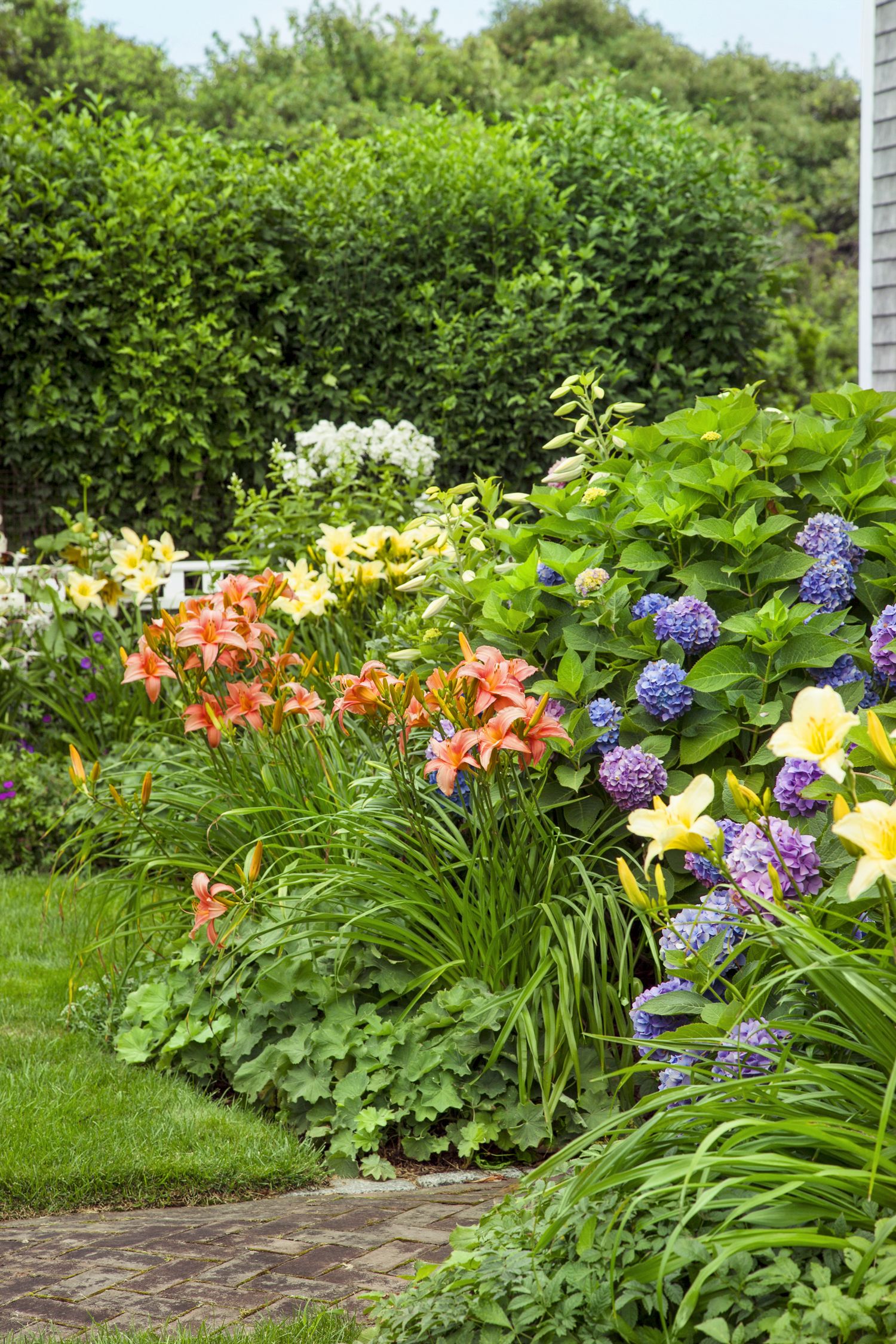
While daylilies thrived in the garden from the beginning, the selection was eventually narrowed down to two main varieties to be repeated throughout the beds: ‘Chicago Peach,’ for its waves of showy apricot flowers, and ‘Hyperion,’ for its reliable sunny-yellow blooms.
Though Michele spends time in the garden mainly from mid-June to mid-September, she still can’t resist growing a few peonies. Flanking the arbors in the front garden, they are the first blooms to greet her in spring. She also plants a few hollyhocks over by the garage, treating them as annuals and putting in new ones each year. In varying shades of cream and pink, they are a satisfying color indulgence. For pure flower power, and wonderful cut stems that she can bring indoors to enjoy, ‘Casa Blanca’ and ‘Star Gazer’ Oriental lilies are dotted throughout the beds. But high-maintenance plants like foxgloves, which require staking, no longer have a place in the garden.
Shown: ‘Nikko Blue’ hydrangeas were replaced with ‘Endless Summer,’ which blooms all season. ‘Hyperion’ and ‘Chicago Peach’ daylilies lend sunny contrast.
Succession of Blooms
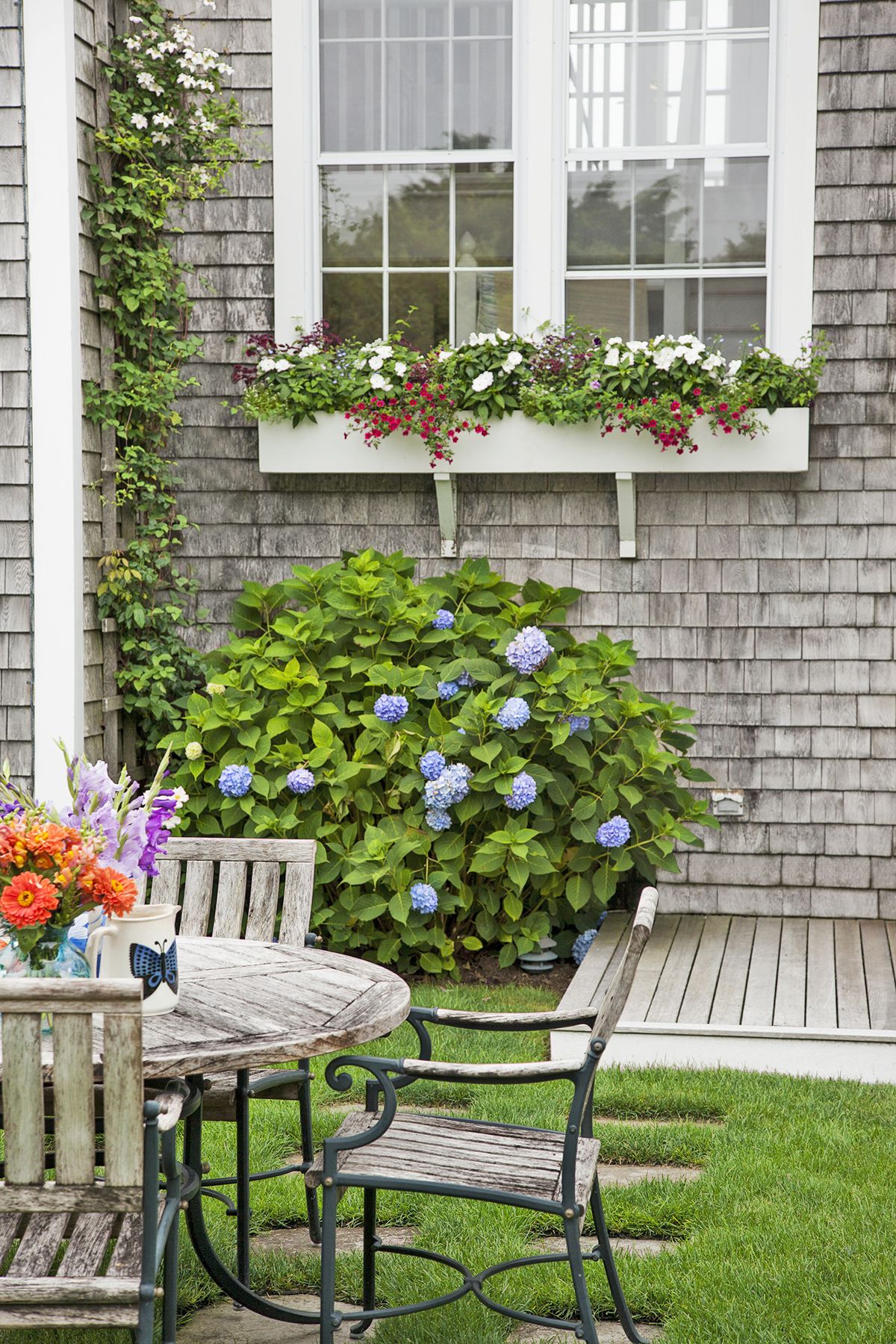
Careful pruning helps to orchestrate the succession of blooms and to maintain a neat appearance. When perennials like daylilies have finished flowering and are beginning to look tattered, they are cut back to within 4 or 5 inches of the ground so that fresh, new foliage emerges. This tidier foliage carries the plant through the rest of the season, offering a serene green backdrop to later-blooming perennials like Japanese anemone and monkshood, as well as an occasional second flowering. Late-season bloomers like phlox are pruned earlier in spring to control their height and bloom time—hungry deer offer help with this task—and spent flowers are deadheaded regularly to encourage more. As Pallenberg says, “A healthy, established plant loves to be pruned.”
Shown: A colorful display for a window box includes ‘Cherry Pink’ million bells, white New Guinea impatiens, and blue lobelia.
Shells Underfoot
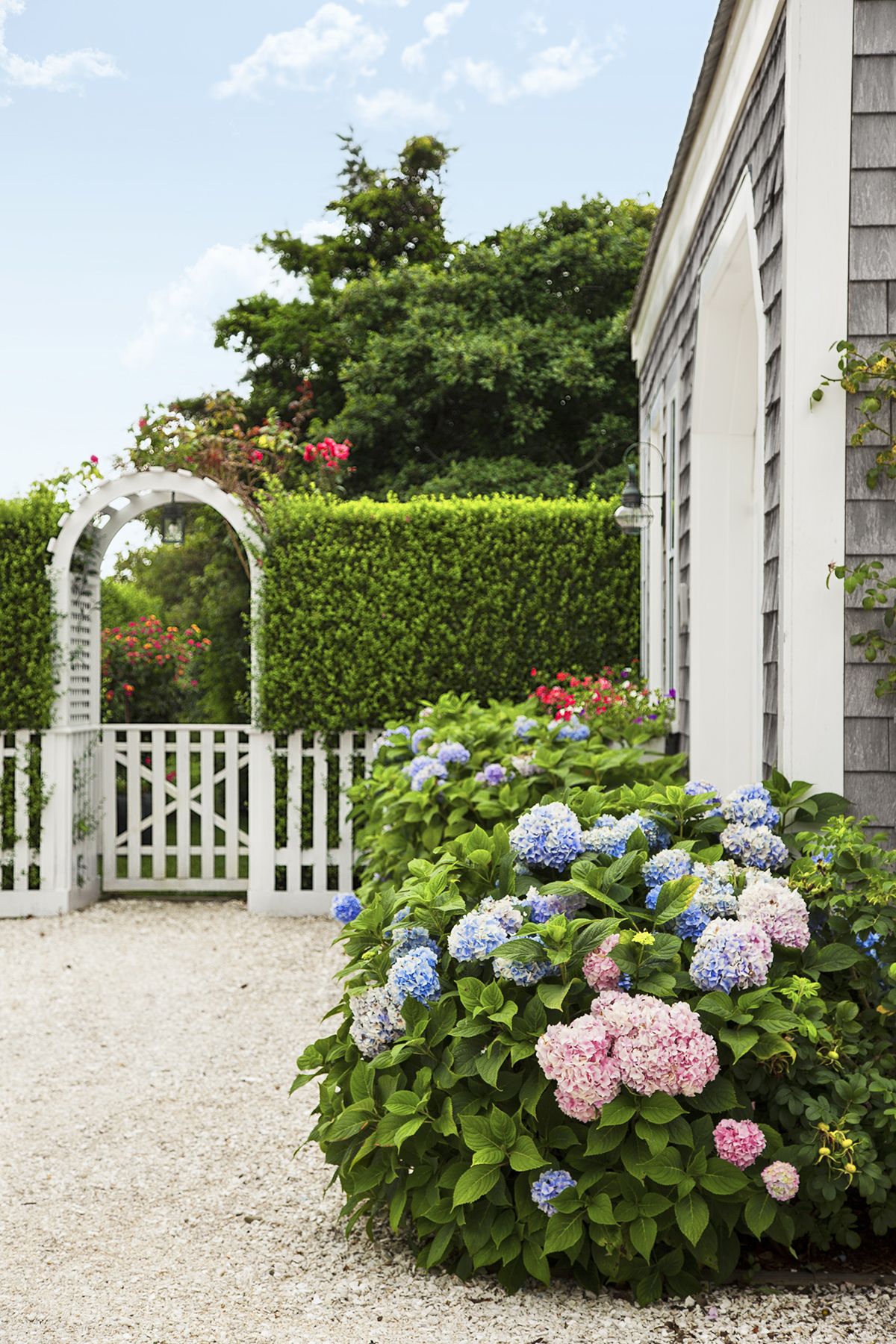
While Michele is happy with the garden now, she continues to make minor adjustments. ‘Nikko Blue’ hydrangeas are being replaced with longer-blooming, more resilient ‘Endless Summer’ varieties, for instance. And many of the ailing buckthorn hedges will make way for an informal mix of viburnums and bayberries that will ease the transition between the garden and the surrounding landscape.
Every garden evolves, after all, from year to year, as well as through the season. Change is the one constant, giving this owner enormous pleasure. “What’s fun is watching the garden come alive in spring, then progress and unfold, getting lush and thick in July, and reaching its prime in August,” says Michele. “It’s magical.”
Shown: Crushed shells cover the approach to the garage. Sheared privet hedges wall off the area behind the picket fence and arbor entrance.
The Garden Plan
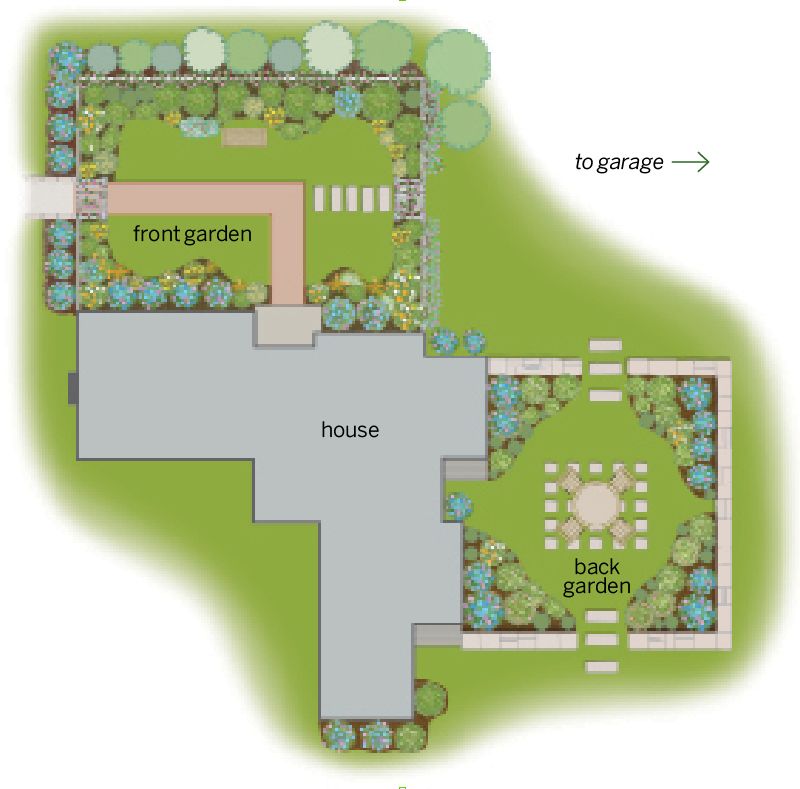
Bordered by a picket fence and bisected by a brick walkway, the front garden welcomes the owners and their visitors. The back garden, ringed with stone walls and checkered with pavers, offers a place for dining and entertaining. In both areas, rectilinear hardscape is softened with curving borders.
Garden designer: Amy Pallenberg

